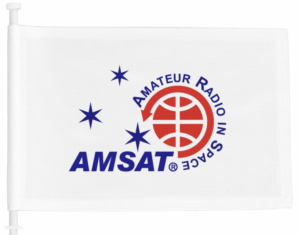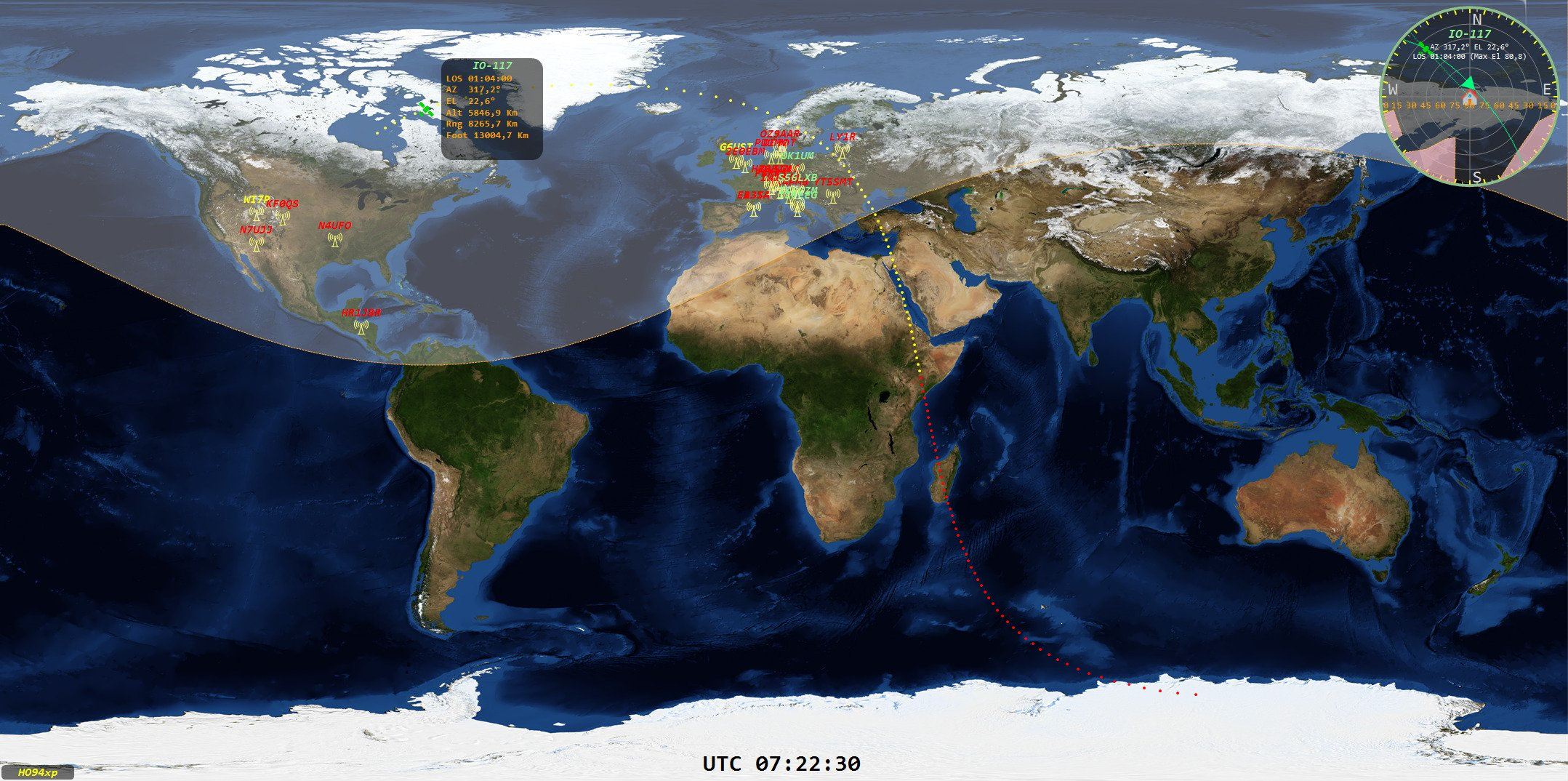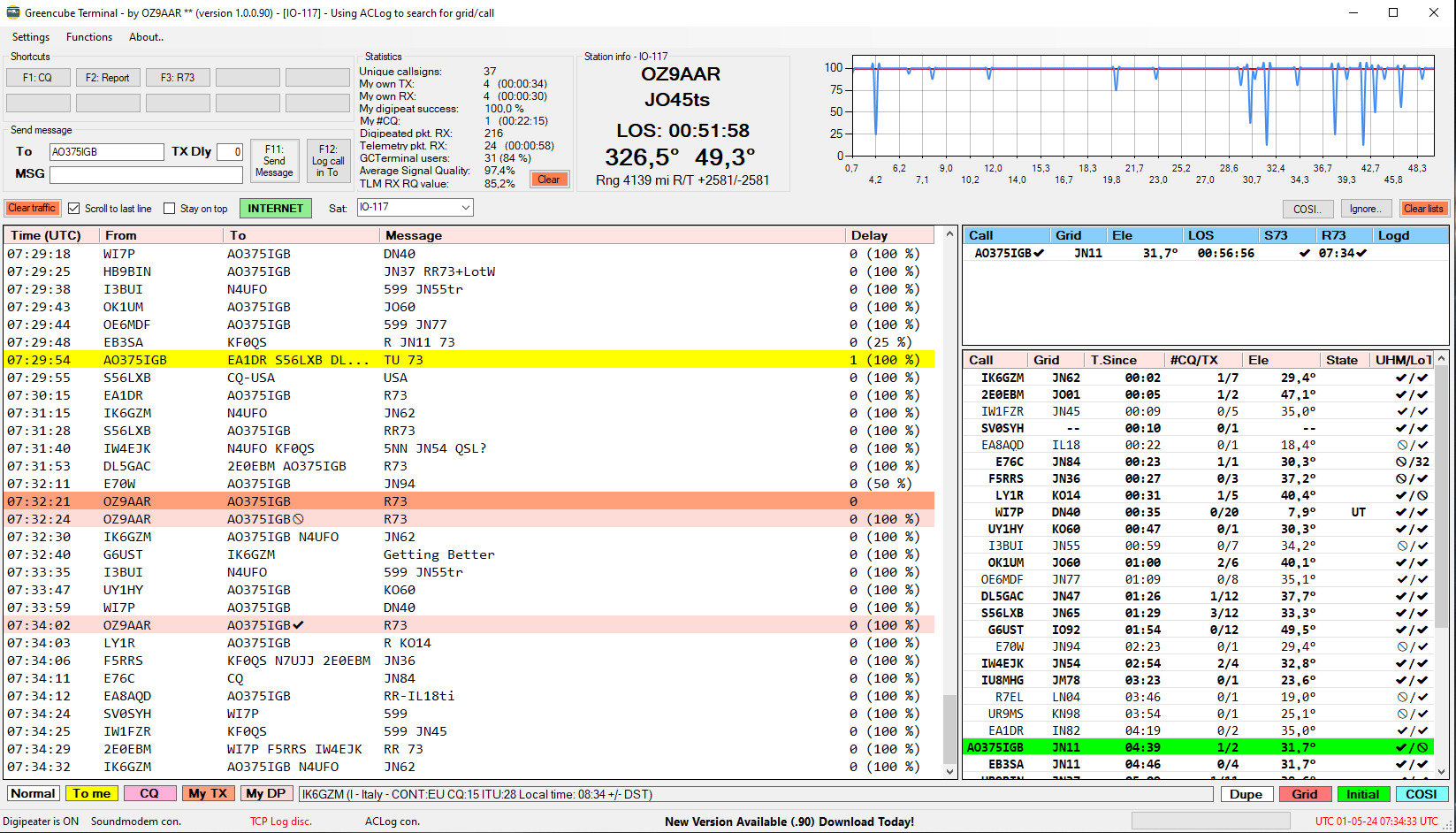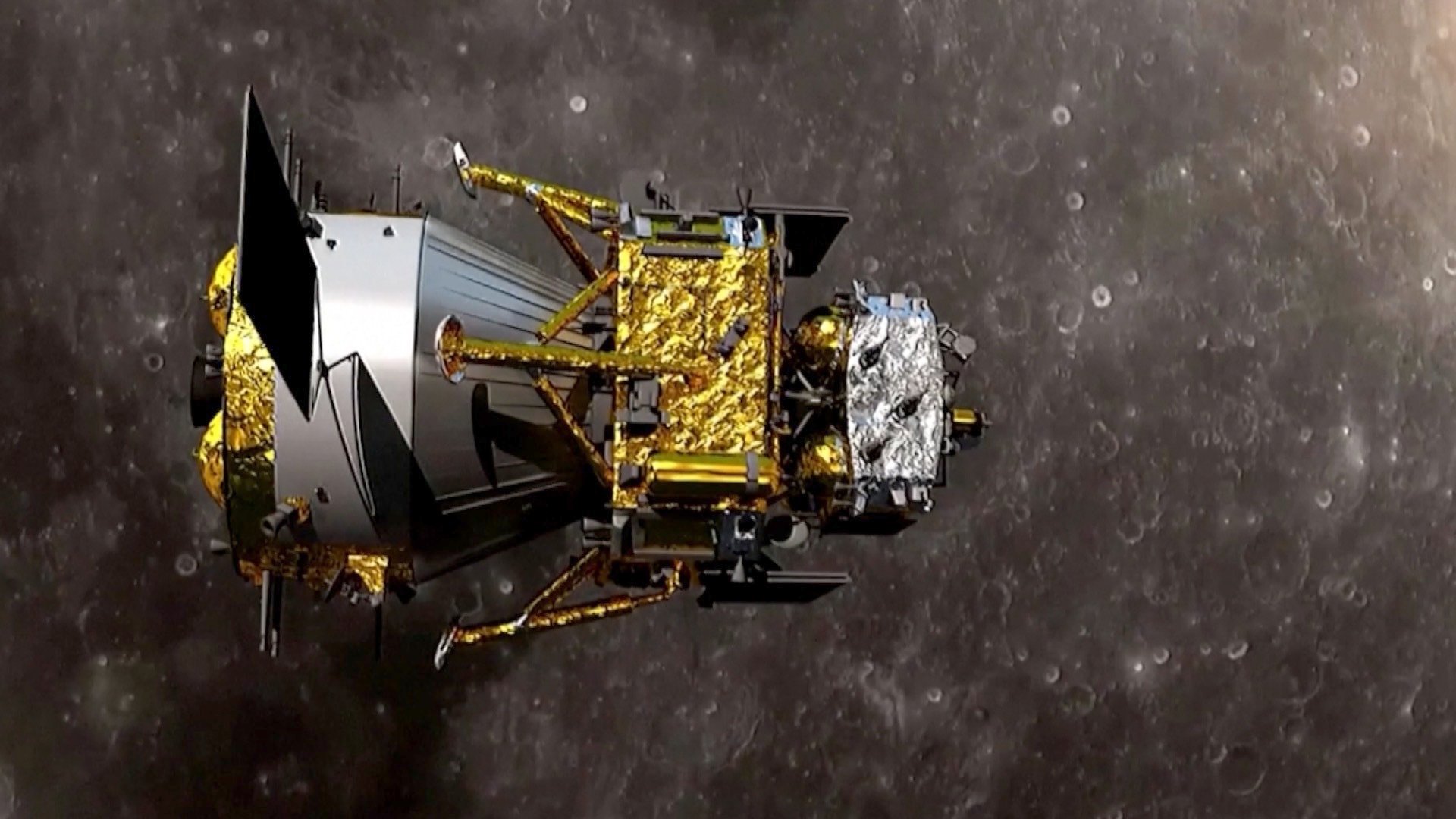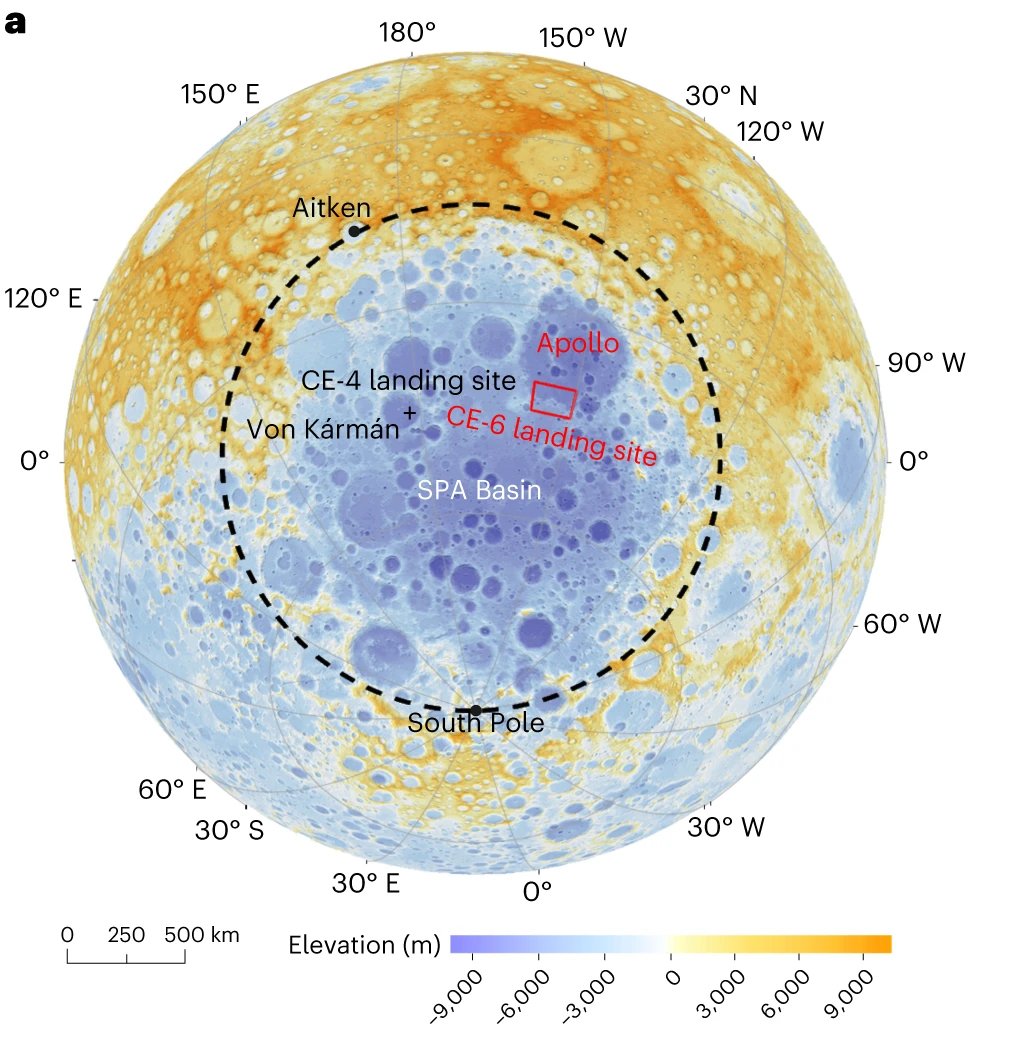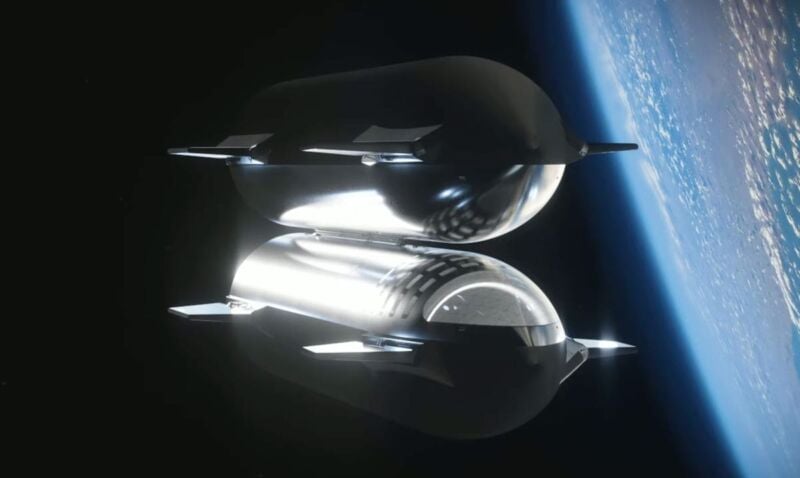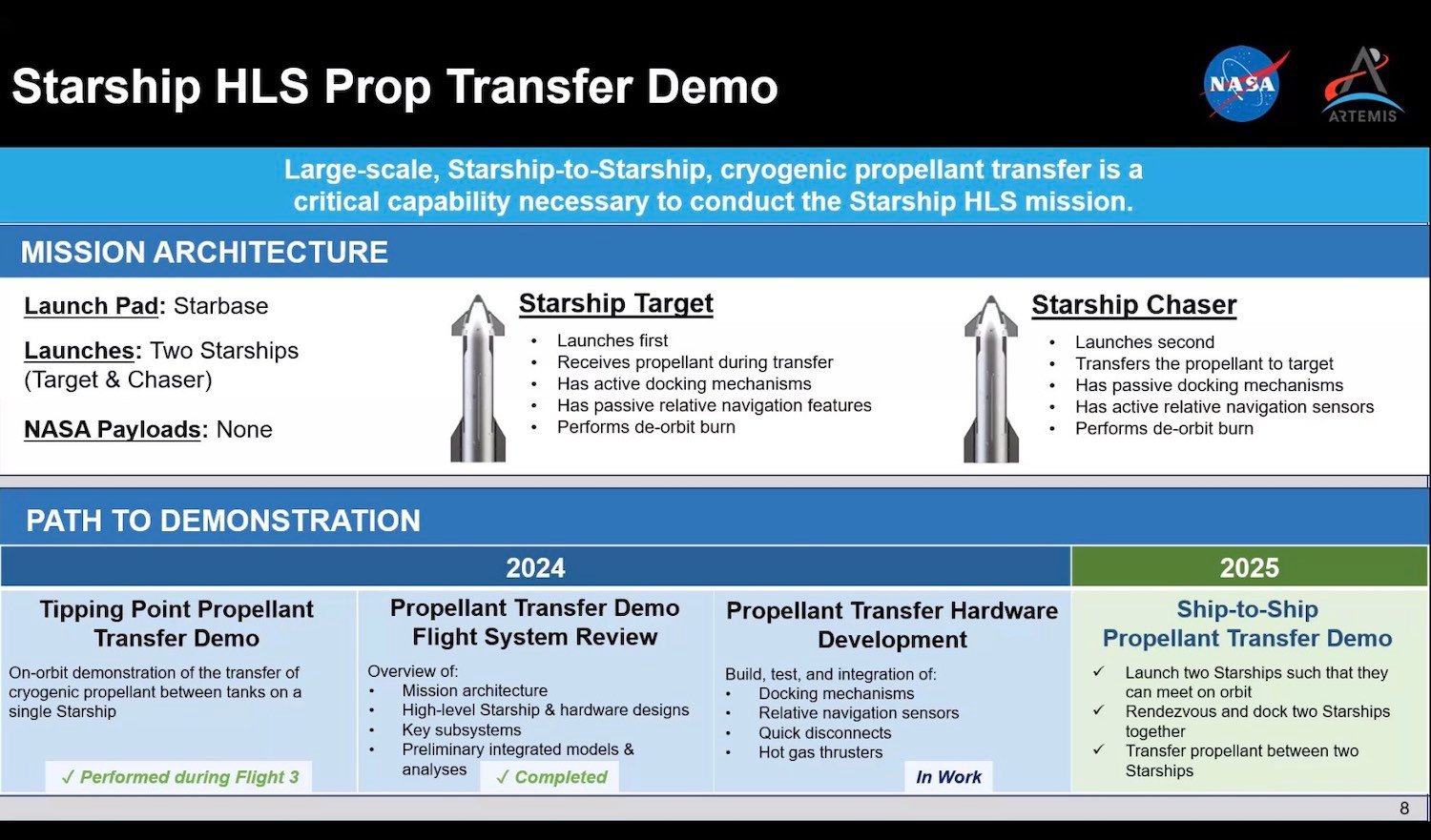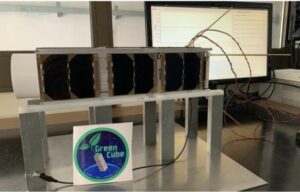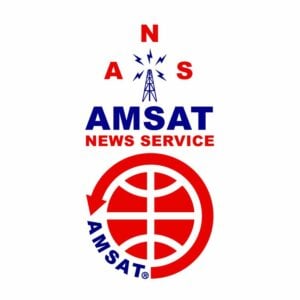
AMSAT News Service
ANS-147
May 26, 2024
In this edition:
- Hamvention 2024 a Success for AMSAT
- Project OSCAR Discontinues Operations, Donates Remaining Funds to AMSAT
- Nominations Open for 2024 AMSAT Board of Directors Election
- Changes to AMSAT-NA TLE Distribution for May 24, 2024
- ARISS News
- Upcoming Satellite Operations
- Hamfests, Conventions, Maker Faires, and Other Events
- Satellite Shorts From All Over
The AMSAT News Service bulletins are a free, weekly news and information service of AMSAT, The Radio Amateur Satellite Corporation. ANS publishes news related to Amateur Radio in Space including reports on the activities of a worldwide group of Amateur Radio operators who share an active interest in designing, building, launching and communicating through analog and digital Amateur Radio satellites.
The news feed on https://www.amsat.org publishes news of Amateur Radio in Space as soon as our volunteers can post it.
Please send any amateur satellite news or reports to: ans-editor [at] amsat.org
You can sign up for free e-mail delivery of the AMSAT News Service Bulletins via the ANS List; to join this list see: https://mailman.amsat.org/postorius/lists/ans.amsat.org/
Save the Date! Symposium 2024

Mark your calendar now for the 2024 AMSAT Symposium,
October 25-27, 2024 at the Doubletree by Hilton Tampa Rocky Point Waterfront in Tampa, Florida!
Hamvention 2024 a Success for AMSAT
Hamvention 2024 was held this past weekend at the Greene County Fairgrounds in Xenia, OH. It was a busy weekend at the AMSAT booth as visitors joined or renewed their memberships, learned about satellite operation, checked out our Engineering and CubeSat Simulator displays, and purchased items from AMSAT’s store.
The first event of the weekend was AMSAT’s informal “Dinner at Tickets” at Tickets Pub & Eatery in Fairborn, OH, on Thursday evening. Approximately 20 AMSAT members and visitors attended this informal dinner and enjoyed great conversation about amateur radio satellites.

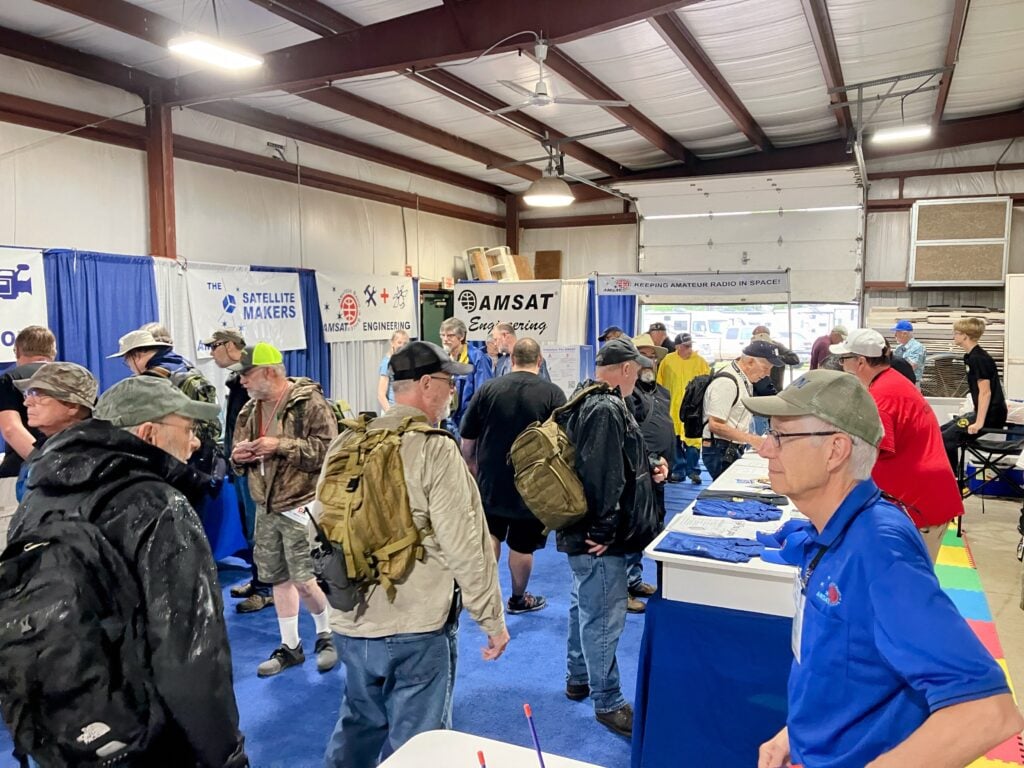
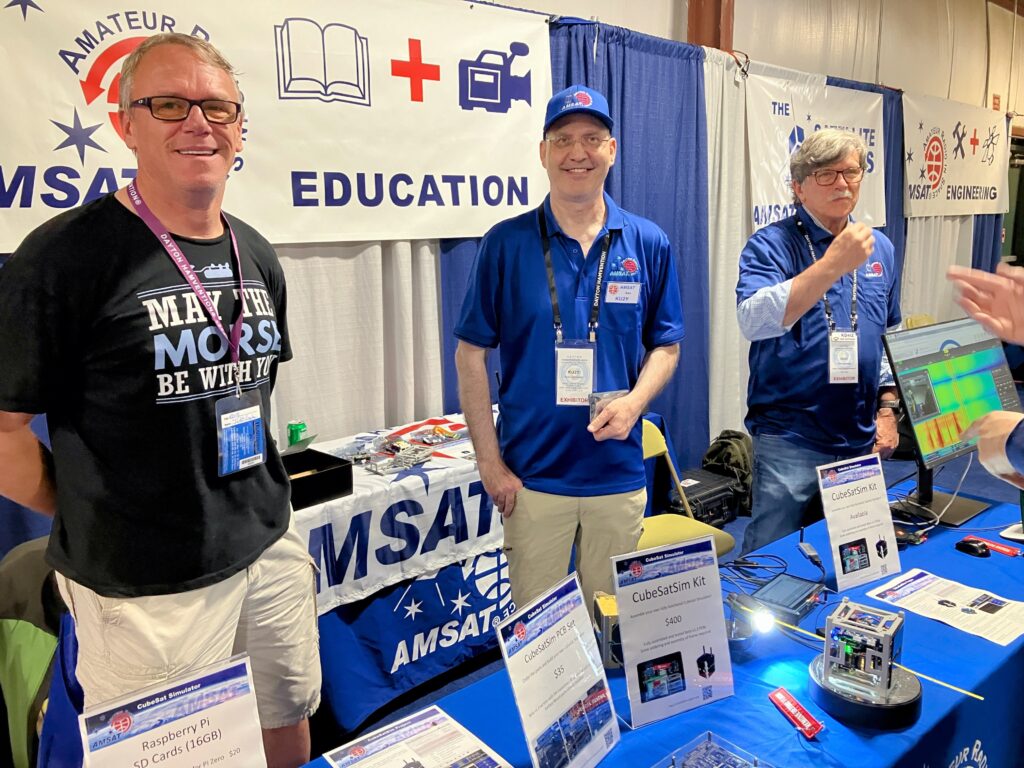
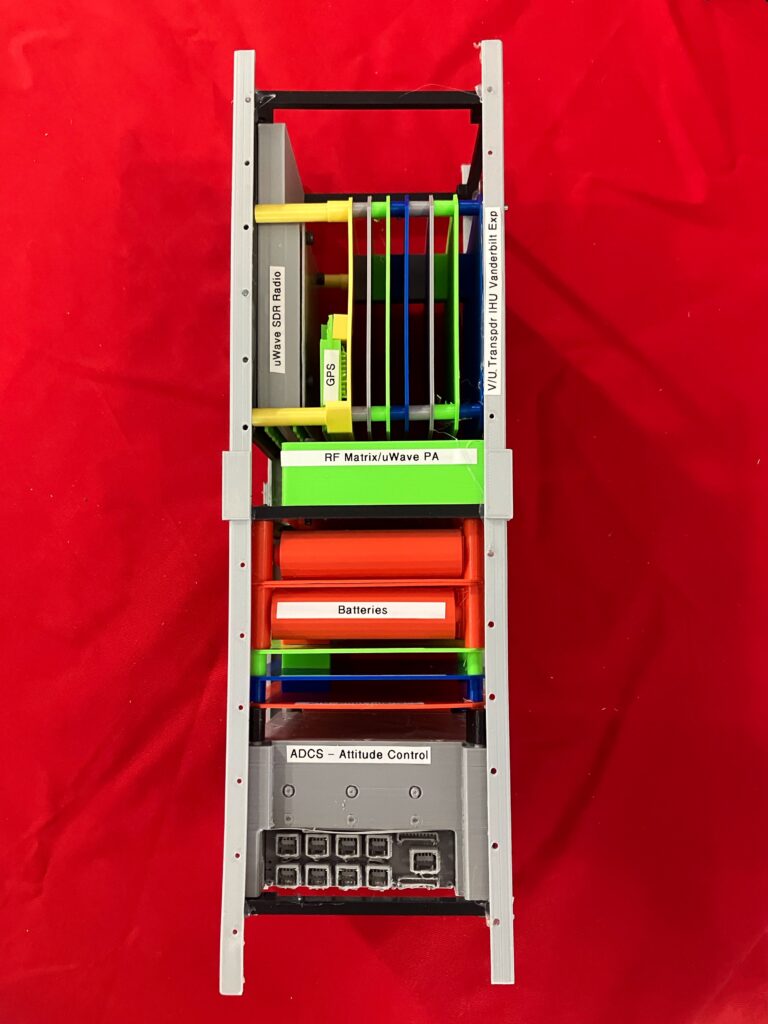
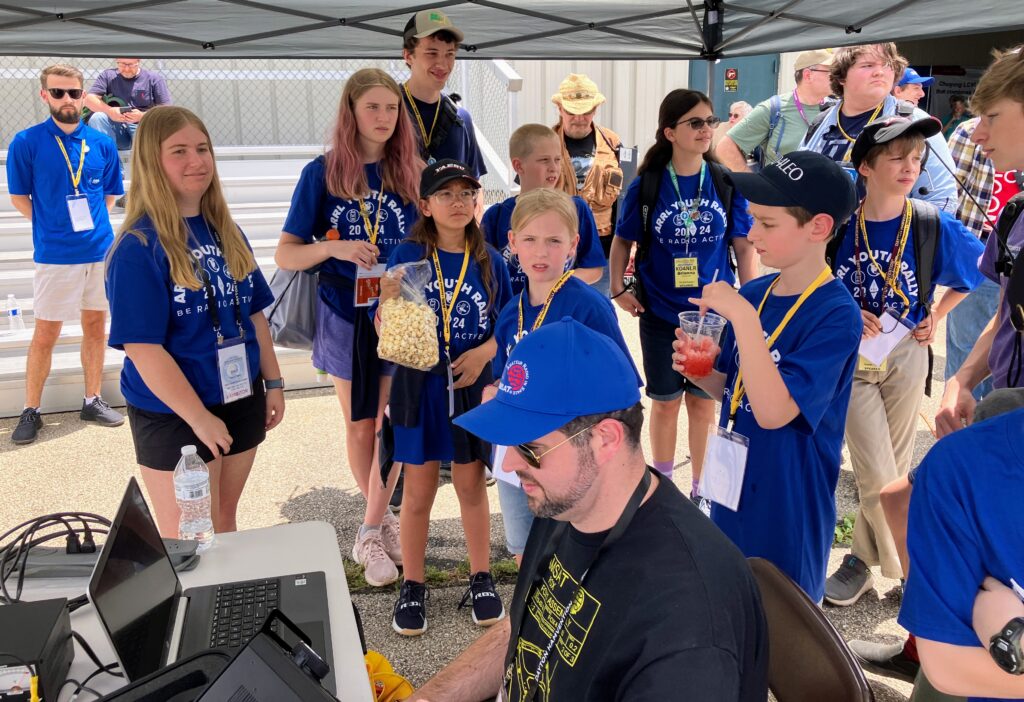
The AMSAT and ARISS forums were held on Saturday afternoon. Archived videos of each forum presentation can be found on YouTube, courtesy of DARA:
AMSAT: Celebrating the Past, Looking to the Future
AMSAT GOLF 2024
AMSAT CubeSat Simulator
AMSAT Youth Initiative
ARISS: 40 Years of Amateur Radio in Space
[ANS thanks the AMSAT Hamvention Team for the above information – photos courtesy Keith Baker, KB1SF]
Project OSCAR Discontinues Operations, Donates Remaining Funds to AMSAT
Project OSCAR, the organization responsible for the construction and launch of the first amateur radio satellite, OSCAR 1 in 1961, as well as OSCARs 2, 3 and 4, has discontinued operations and donated its remaining funds to AMSAT.
Project OSCAR Inc. was originally formed to investigate the possibility of putting an amateur satellite in orbit. The first amateur radio satellite, OSCAR-1 orbited the earth for 22 days, transmitting the “HI” greeting in Morse Code. Since that beginning, the group had focused on supporting and promoting amateur radio satellite related projects.
In addition to donating its remaining funds to AMSAT, Project OSCAR also granted AMSAT ownership to the future rights to the term “OSCAR” or Orbiting Satellite Carrying Amateur Radio. Ever since the launch of OSCAR I in 1961, it has been traditional for amateur radio satellites to carry the name OSCAR after their launch and activation in orbit. For several decades, AMSAT has administered the numbering of OSCAR satellites at Project OSCAR’s request. 121 satellites have received OSCAR designations.
AMSAT is greatly appreciative of all of those who have been involved in Project OSCAR over the past 64 years. The large and growing amateur satellite community owes its existence to those early pioneers who decided that amateur radio had a place in space and made it happen. AMSAT is committed to upholding the legacy of those early pioneers and Keeping Amateur Radio in Space.
[ANS thanks Project OSCAR and AMSAT for the above information]
Nominations Open for 2024 AMSAT Board of Directors Election
AMSAT solicits nominations for the 2024 AMSAT Board of Directors election, to be held in the third quarter of the year. The seats of the following three incumbent Directors expire in 2024 and will be filled by this year’s election:
- Mark Hammond, N8MH
- Bruce Paige, KK5DO
- Paul Stoetzer, N8HM
Further, up to two Alternate Directors may be elected for one-year terms. A valid nomination for Director must be written and requires either one Member Society or five current individual members in good standing to nominate an AMSAT member. Written nominations, with the nominee’s name, call sign, and contact information, as well as the nominators’ names, call signs, and contact information, should be sent to the AMSAT Secretary:
Jeff Davis, KE9V
PO Box 11
Yorktown, IN 47396
AMSAT bylaws require that the nomination be written and in the form specified by the Secretary who has elected to accept written nomination materials via postal mail or in electronic form, including email or electronic image of a paper document. Fax transmissions cannot be accepted.
Email nominations may be sent to jdavis [at] amsat [dot] org.
No matter what means are used, petitions MUST be received by the Secretary no later than June 15th. The Secretary will verify the qualifications of candidates and nominating members or Member Societies as petitions are received and will notify candidates whether their nominations are in order by the end of June.
[ANS thanks Jeff Davis, KE9V, AMSAT Secretary, for the above information]
The 2024 Coins Are Here Now!
Help Support GOLF and Fox Plus.
Join the AMSAT President’s Club today!
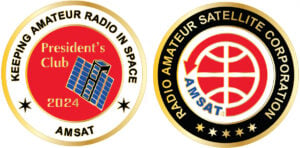
Changes to AMSAT-NA TLE Distribution for May 24, 2024
Two Line Elements or TLEs, often referred to as Keplerian elements or keps in the amateur community, are the inputs to the SGP4 standard mathematical model of spacecraft orbits used by most amateur tracking programs. Weekly updates are completely adequate for most amateur satellites. TLE bulletin files are updated Thursday evenings around 2300 UTC, or more frequently if new high interest satellites are launched. More information may be found at https://www.amsat.org/keplerian-elements-resources/
The following satellite has been removed from this week’s AMSAT-NA TLE distribution:
OPS-SAT NORAD Cat ID 44878 Decayed from orbit on or about 23 May 2024
[ANS thanks Thian Golda, KO1MAN, New England Sci-Tech Orbital Analyst, for the above information]
Need new satellite antennas?
Purchase an M2 LEO-Pack from the AMSAT Store!
When you purchase through AMSAT, a portion of the proceeds goes towards Keeping Amateur Radio in Space.
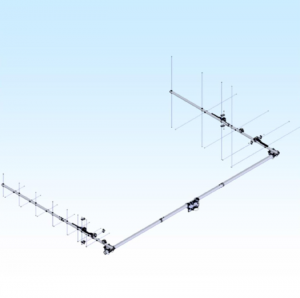
ARISS News
Amateurs and others around the world may listen in on contacts between amateurs operating in schools and allowing students to interact with astronauts and cosmonauts aboard the International Space Station. The downlink frequency on which to listen is 145.800 MHz worldwide.
Children’s Technopark “Quantorium”, Obninsk, Russia, direct via R3XDC
The ISS callsign is presently scheduled to be RSØISS
The scheduled crewmember is Aleksandr Grebyonkin RZ3DSE
The ARISS mentor is RV3DR
Contact is go for Mon 2024-05-27 14:07 UTC (***)
As always, if there is an EVA, a docking, or an undocking; the ARISS radios are turned off as part of the safety protocol.
The crossband repeater continues to be active (145.990 MHz up {PL 67} & 437.800 MHz down), If any crewmember is so inclined, all they have to do is pick up the microphone, raise the volume up, and talk on the crossband repeater. So give a listen, you just never know.
Note, all times are approximate. It is recommended that you do your own orbital prediction or start listening about 10 minutes before the listed time.
The latest information on the operation mode can be found at https://www.ariss.org/current-status-of-iss-stations.html
The latest list of frequencies in use can be found at https://www.ariss.org/contact-the-iss.html
[ANS thanks Charlie Sufana, AJ9N, one of the ARISS operation team mentors for the above information]
Upcoming Satellite Operations
Quick Hits:
On 30th May I will operate as G0ABI/P from the Lizard Peninsula Cornwall IN79, this is a very exposed area and is subject to extreme weather at times so fingers crossed.
Starting at 02:00 the first 2 passes of IO-117 will be from the roadside, the remaining passes will be from the Marconi Wireless Station. My thanks to them for allowing me to operate from this facility. The object of the excise to give this grid to as many people as possible. So if you can use UHM please when you call and receive a checkmark, I have received your call PLEASE wait until I am able to reply, this way I can give more people the grid. I will respond to the callers who’s LOS is first. When you get R73 you are in the log there is no need to reply.
If you are unable to use UHM please do NOT continually call as this stops me responding.
I will work other sats during the day please check https://hams.at
Let’s have a fun and memorable day filled with great operating.
Best 73
Pete G0ABI
Major Roves:
[ANS thanks Ian Parsons, K5ZM, AMSAT Rover Page Manager, and Alex Ners, K6VHF, for the above information]
Want to fly the colors on your own grid expedition?
Get an AMSAT car flag and other neat stuff from our Zazzle store!
25% of the purchase price of each product goes towards Keeping Amateur Radio in Space
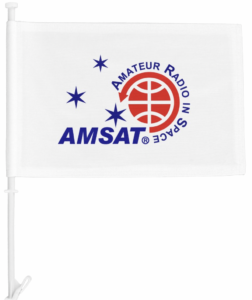
Hamfests, Conventions, Maker Faires, and Other Events
AMSAT Ambassadors provide presentations, demonstrate communicating through amateur satellites, and host information tables at club meetings, hamfests, conventions, maker faires, and other events.
AMSAT Ambassador Clint Bradford, K6LCS, says,
“Two “different” audiences last week invited me to speak. The Mount Baker Amateur Radio Club in Bellingham, WA, was a ham club – and we had a great time.”
“Think a 75-minute presentation on “working the easy satellites” would be appropriate for your club or event? Let me know by emailing me at k6lcsclint (at) gmail (dot) com or calling me at 909-999-SATS (7287)!”
Clint has NEVER given the exact same show twice: EACH of the 150+ presentations so far has been customized/tailored to their audiences.
Scheduled Events
Northeast HamXpostion
August 22-25, 2024
Best Western Royal Plaza Hotel & Trade Center
181 Boston Post Road W
Marlborough, MA 01752
2024 AMSAT Space Symposium and Annual General Meeting
October 25-27, 2024
Doubletree by Hilton Tampa Rocky Point Waterfront
3050 N Rocky Point Dr W
Tampa, FL 33607
[ANS thanks Clint Bradford, K6LCS, and AMSAT for the above information]
Satellite Shorts from All Over
+ The University of Maine has published an article about MESAT1, expected to launch within the next couple of months. MESAT1 carries AMSAT’s Linear Transponder Module, a V/u linear transponder. The article can be read at https://umaine.edu/news/blog/2024/05/13/maines-first-research-satellite-to-launch-this-year/
+ LU7AA will fly Sunday 05/26 13hs(z) from San Luis, Argentina, a latex Balloon carrying a 200 KHz linear V/U Multimode Transponder as a mini QO-100. (aka PUNTANO-1). The object is to validate future satellite platforms planned by AMSAT Argentina. Pictures and details on http://amsat.org.ar/?f=
+ A video of pre-launch testing of the AMSAT Microsats (AO-16, DO-17, WO-18, and LO-19) was recently uploaded to YouTube by Stephen Smith. It can be viewed at https://www.youtube.com/watch?v=OWip0QjwLVg
+ HB9SKA released his monthly OSCAR News (in German) at http://home.datacomm.ch/th.frey/oscar.htm
+ As part of a series of activations of QO-100 from Newfoundland, G0MRF worked 147 stations on SSB, 92 on FT8, and 1 on CW as VO1/G0MRF. (Thanks to Dave Bowman, G0MRF)
+ Graham Shirville, G3VZV, was also active from Newfoundland this past weekend. He was running 10 watts with a backpack portable station. A short video of his activation can be found at https://x.com/G8GTZ/status/1791863503441076568
+ Stefan Wagner, VE4NSA, and John Langille, VE1CWJ, made the first SSB QSOs via QO-100 from North America on May 16th as VO100QO. A picture of their setup can be found at https://x.com/vu3hpf/status/1791383807473377461
+ The June 2024 issue of The Spectrum Monitor has been released with an excellent Amateur Satellites column by Keith Baker, KB1SF. In his column, he discusses the AMSAT GOLF program. The Spectrum Monitor is an online magazine dealing with all facets of the radio hobby. More information can be found at https://www.thespectrummonitor.com/
Join AMSAT today at https://launch.amsat.org/
In addition to regular membership, AMSAT offers membership to:
- Societies (a recognized group, clubs or organization).
- Primary and secondary school students are eligible for membership at one-half the standard yearly rate.
- Post-secondary school students enrolled in at least half time status shall be eligible for the student rate for a maximum of 6 post-secondary years in this status.
- Memberships are available for annual and lifetime terms.
Contact info [at] amsat.org for additional membership information.
73 and remember to help Keep Amateur Radio in Space!
This week’s ANS Editor,
Paul Stoetzer, N8HM
n8hm [at] amsat.org
ANS is a service of AMSAT, the Radio Amateur Satellite Corporation, 712 H Street NE, Suite 1653, Washington, DC 20002

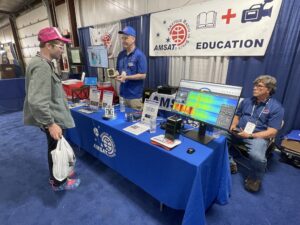 Volunteer members of the AMSAT Engineering team were on hand to show off models of the GOLF-Tee and Fox Plus satellites currently under construction. Engineering team members also discussed various projects that are part of the ASCENT program, developing possible components for future satellites.
Volunteer members of the AMSAT Engineering team were on hand to show off models of the GOLF-Tee and Fox Plus satellites currently under construction. Engineering team members also discussed various projects that are part of the ASCENT program, developing possible components for future satellites.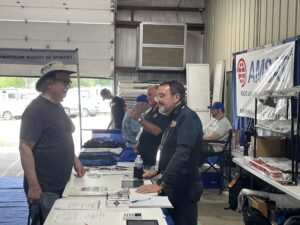 At the “Beginners Corner,” experienced satellite operators answered questions and helped the curious to understand how easy and exciting it is to get started in this fascinating aspect of the amateur radio hobby. Rain on Friday morning prevented live satellite demonstrations, but these took place as satellite passes and Hamvention circumstances permitted on Saturday and Sunday.
At the “Beginners Corner,” experienced satellite operators answered questions and helped the curious to understand how easy and exciting it is to get started in this fascinating aspect of the amateur radio hobby. Rain on Friday morning prevented live satellite demonstrations, but these took place as satellite passes and Hamvention circumstances permitted on Saturday and Sunday.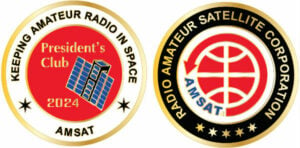
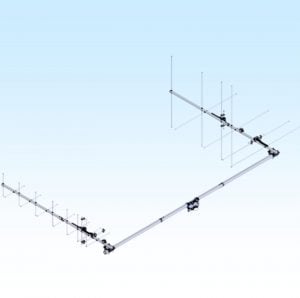
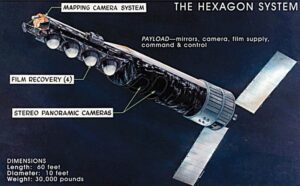 The Air Force’s KH-9 Hexagon satellite deployed the tiny IRCB (S73-7) satellite in 1974. (Illustration: U.S. Air Force)
The Air Force’s KH-9 Hexagon satellite deployed the tiny IRCB (S73-7) satellite in 1974. (Illustration: U.S. Air Force)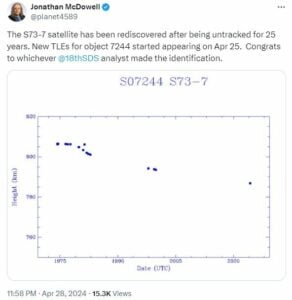
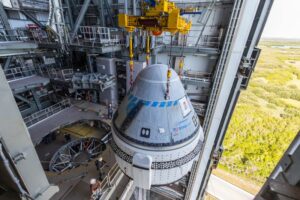 Boeing’s Starliner spacecraft is lifted to be placed atop an Atlas V rocket for its first crewed launch. [Credit: NASA/Cory Huston]
Boeing’s Starliner spacecraft is lifted to be placed atop an Atlas V rocket for its first crewed launch. [Credit: NASA/Cory Huston]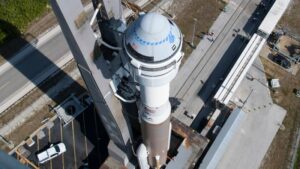 Boeing’s CST-100 Starliner ahead of the Orbital Flight Test-2 (OFT-2) mission in 2022 [Credit: NASA/Joel Kowsky]
Boeing’s CST-100 Starliner ahead of the Orbital Flight Test-2 (OFT-2) mission in 2022 [Credit: NASA/Joel Kowsky]